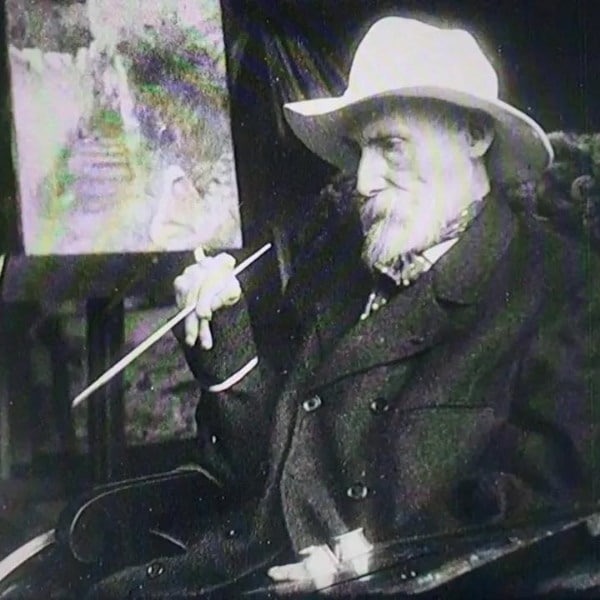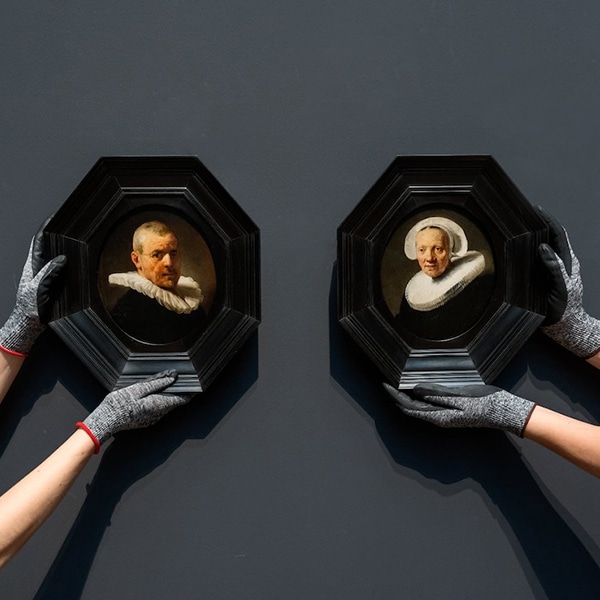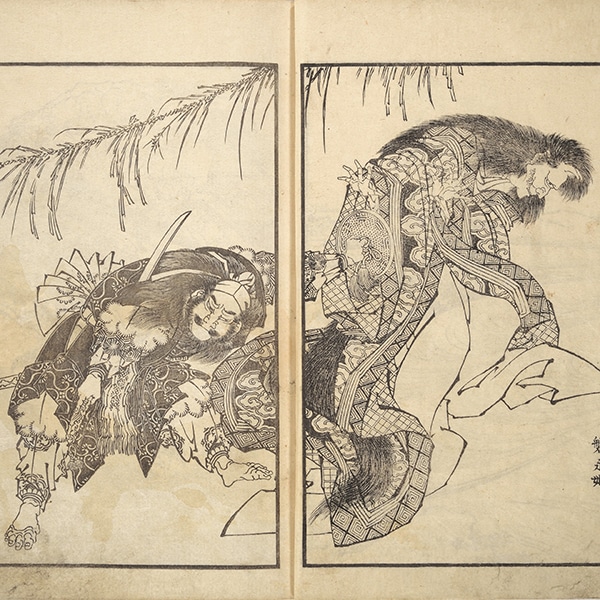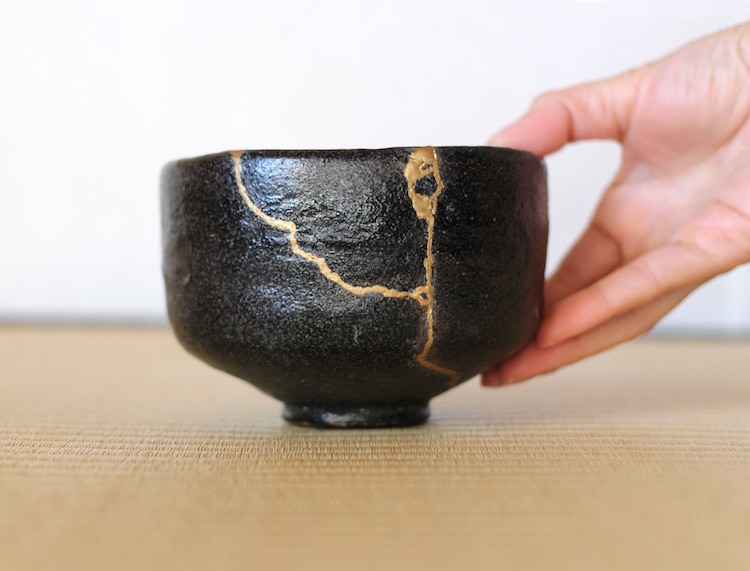
Photo: Stock Photos from Lia_t/Shutterstock
Poetically translated to “golden joinery,” kintsugi, or Kintsukuroi, is the centuries-old Japanese art of fixing broken pottery. Rather than rejoin ceramic pieces with a camouflaged adhesive, the kintsugi technique employs a special tree sap lacquer dusted with powdered gold, silver, or platinum. Once completed, beautiful seams of gold glint in the conspicuous cracks of ceramic wares, giving a one-of-a-kind appearance to each “repaired” piece.
This unique method celebrates each artifact's unique history by emphasizing its fractures and breaks instead of hiding or disguising them. In fact, kintsugi often makes the repaired piece even more beautiful than the original, revitalizing it with a new look and giving it a second life.
Here, we take a look at this enchanting craft, tracing its history, exploring its methods, and offering a glimpse into how contemporary creatives keep it alive.
The History of Kintsugi
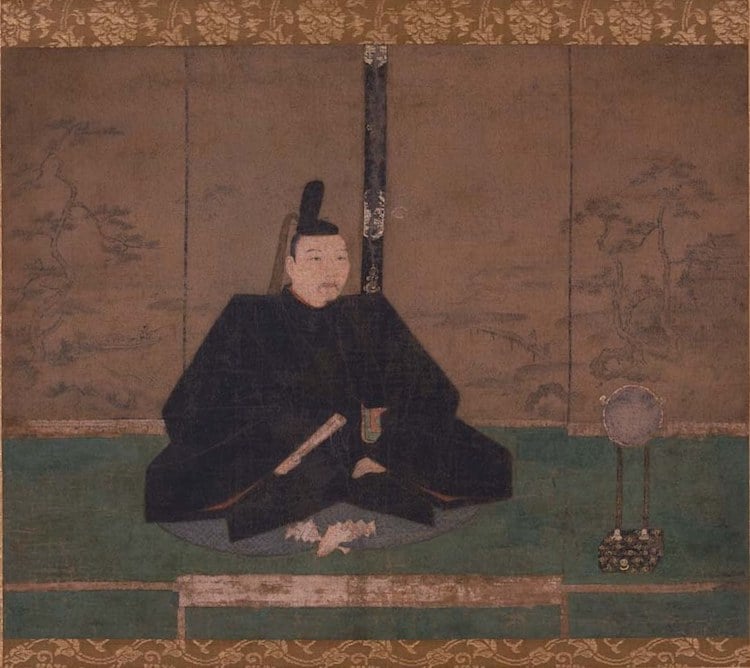
Portrait said to be of Ashikaga Yoshimasa, 15th century (Photo: Wikimedia Commons, Public domain)
While kintsugi's origins aren't entirely clear, historians believe that it dates back to the late 15th century. According to legend, the craft commenced when Japanese shogun Ashikaga Yoshimasa sent a cracked chawan—or tea bowl—back to China to undergo repairs. Upon its return, Yoshimasa was displeased to find that it had been mended with unsightly metal staples. This motivated contemporary craftsmen to find an alternative, aesthetically pleasing method of repair, and kintsugi was born.
By the 17th century, kintsugi has become common practice in Japan. According to Louise Cort (the curator of ceramics at the Freer Gallery of Art and Arthur M. Sackler Gallery), it was during this time that a Japanese warrior infamously purchased, broke, and repaired standard tea bowls in order to make a profit.“That seems to indicate that, by the beginning of the 17th century, kintsugi was a commonly used technique for repairing—and at the same time, ornamenting—ceramics for tea,” Cort explains.
In addition to serving as an aesthetic principle, kintsugi has long represented prevalent philosophical ideas. Namely, the practice is related to the Japanese philosophy of wabi-sabi, which calls for seeing beauty in the flawed or imperfect. The repair method was also born from the Japanese feeling of mottainai, which expresses regret when something is wasted, as well as mushin, the acceptance of change.
How to Kintsugi a Broken Bowl
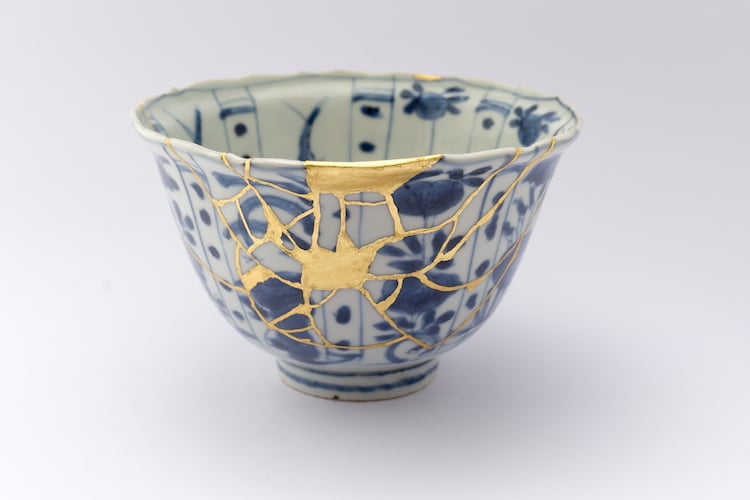
Photo: adobe48015/Depositphotos
There are three predominant styles and methods of kintsugi: crack, piece method, and joint-call. While, in each case, gold, silver, or platinum-dusted epoxy is used to fix the broken pottery, the techniques and finished results vary.
Crack
Objects mended using the crack approach are touched up with minimal lacquer. This is the most common kintsugi technique, and it culminates in the shimmering veins that have come to define the art form.
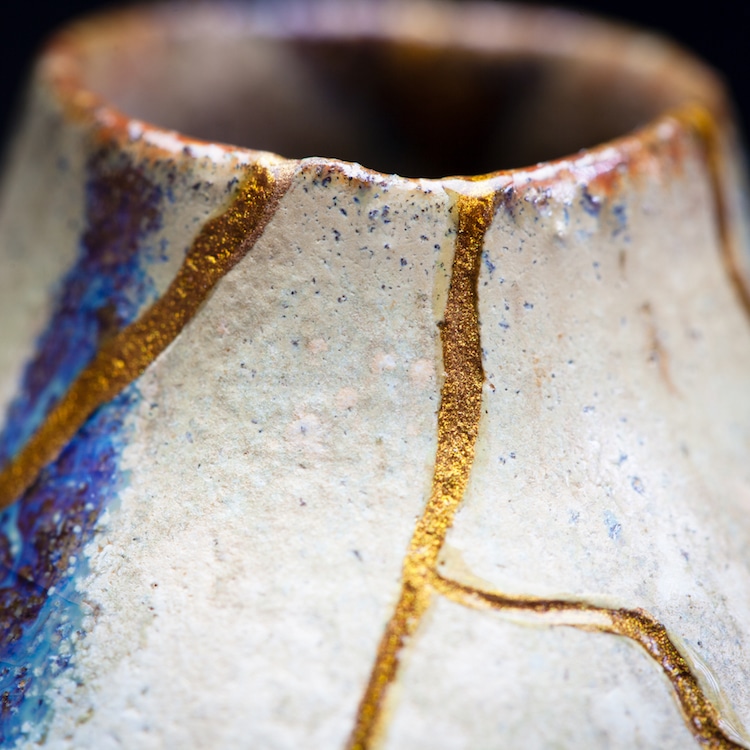
Photo: Stock Photos from photoBeard/Shutterstock
Piece Method
Works restored with the piece method feature replacement fragments made entirely of epoxy.
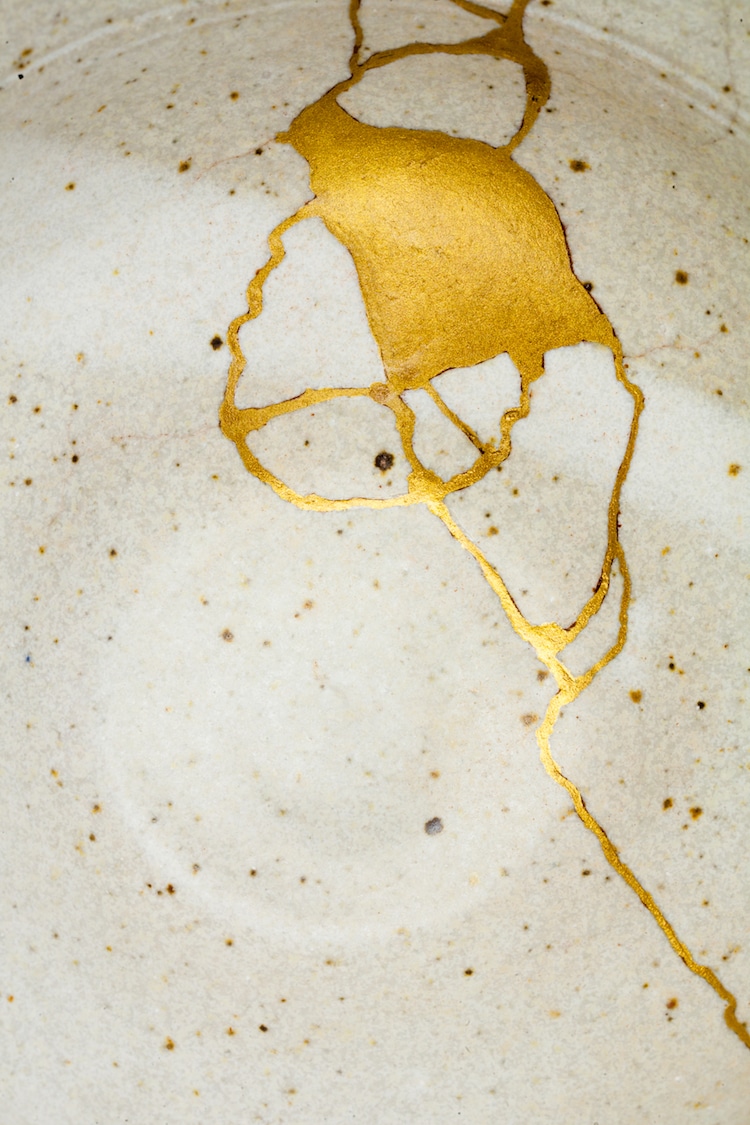
Photo: Stock Photos from photoBeard/Shutterstock
Joint-Call
Pieces fixed using the joint-call technique employ similarly-shaped pieces from other broken wares, combining two aesthetically different works into one uniquely unified product.
Kintsugi Today
Many artists and craftspeople today—both in Japan and abroad—continue to keep this ancient tradition alive. Tomomi Kamoshita and Yee Sookyung incorporate the practice into their ceramic art, while Elisa Sheehan, Rachel Sussman, and Tatiane Freitas have put their own creative twists on the traditional practice by replacing the pottery with unconventional and unexpected canvases.
Tomomi Kamoshita
View this post on Instagram
Japanese artist Tomomi Kamoshita breathes new life into found ceramics. Using the kintsugi technique, she crafts shimmering creations that range from patchwork chopstick rests to mismatched earrings. Much like the kintsugi artists that have come before her, Kamoshita has a philosophical approach to her art. “As every Japanese [person] has realized,” she says, “the waves can take away a great deal from us, but it is also true that we greatly benefit from it.”
Yee Sookyung
View this post on Instagram
Yee Sookyung uses the kintsugi crack technique to create surreal sculptures made from multiple wares. Using 24-karat gold, the Korean creative transforms ordinary pottery into Translated Vases that double as extraordinary allegories. “This work can be a metaphor of a struggle in life that makes people become more mature and beautiful as they overcome suffering,” she reveals.
Elisa Sheehan
View this post on Instagram
Kintsugi Eggshells, an ongoing collection of exquisite installations by New Yorker Elisa Sheehan, sees ephemeral, organic objects transformed into eye-catching works of art. Described as “a visual representation of imperfection as a true value and where flaws are celebrated and viewed as beautiful,” this series features shells coated in delicate washes of paint, abstract ink forms, and gold leaf accents.
Rachel Sussman
View this post on Instagram
Brooklyn-based artist Rachel Sussman has taken kintsugi to the streets. Using a method inspired by the age-old practice, she mends the many cracks that naturally occur in urban environments. Called Sidewalk Kintsukuroi, this longterm project is intended to invite us to “see what’s around us with fresh eyes and to celebrate perseverance.”
Tatiane Freitas
View this post on Instagram
Brazilian artist Tatiane Freitas blurs the line between classic and contemporary design with her modern spin on mending. Using acrylic resin, Freitas “fixes” broken wooden furniture. Though the resin is clear, the repairs are not intended to be camouflaged; instead, the alterations boldly stand out from the wood, culminating in old-meets-new statement pieces.
Bouke de Vries
View this post on Instagram
Dutch artist Brooke de Vries creates remarkable sculptures from fragmented pieces of ceramic. He transforms shattered ceramics into deconstructed sculptures. De Vries' work takes on various forms, but many of them are mended together using the kintsugi technique. His aim is to emphasize the beauty that lies in imperfection, which aligns very well with the philosophy of kintsugi.
If you're interested in channeling your inner artist and exploring the craft yourself, Humade and Mejiro Japan sell kintsugi repair kits, and A Cozy Kitchen also offers a DIY tutorial for those who have the supplies on-hand. These do-it-yourself projects allow you to experience the art of repairing pottery in the Japanese tradition while simultaneously transforming your broken ware into a piece of art.
This article has been edited and updated.
Related Articles:
Artist Uses Japanese Art of Kintsugi to Fill in Basketball Court’s Cracks With Gold
Craftsman Voluntarily Repairs Any Family Heirloom Ceramics Damaged By Earthquakes in Japan
Broken Vases Are Restored by Sewing Them Back Together with Gold Thread
Origami: How the Ancient Art of Paper Folding Evolved Over Time and Continues to Inspire












































































